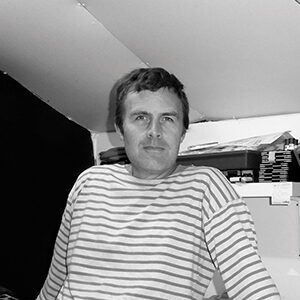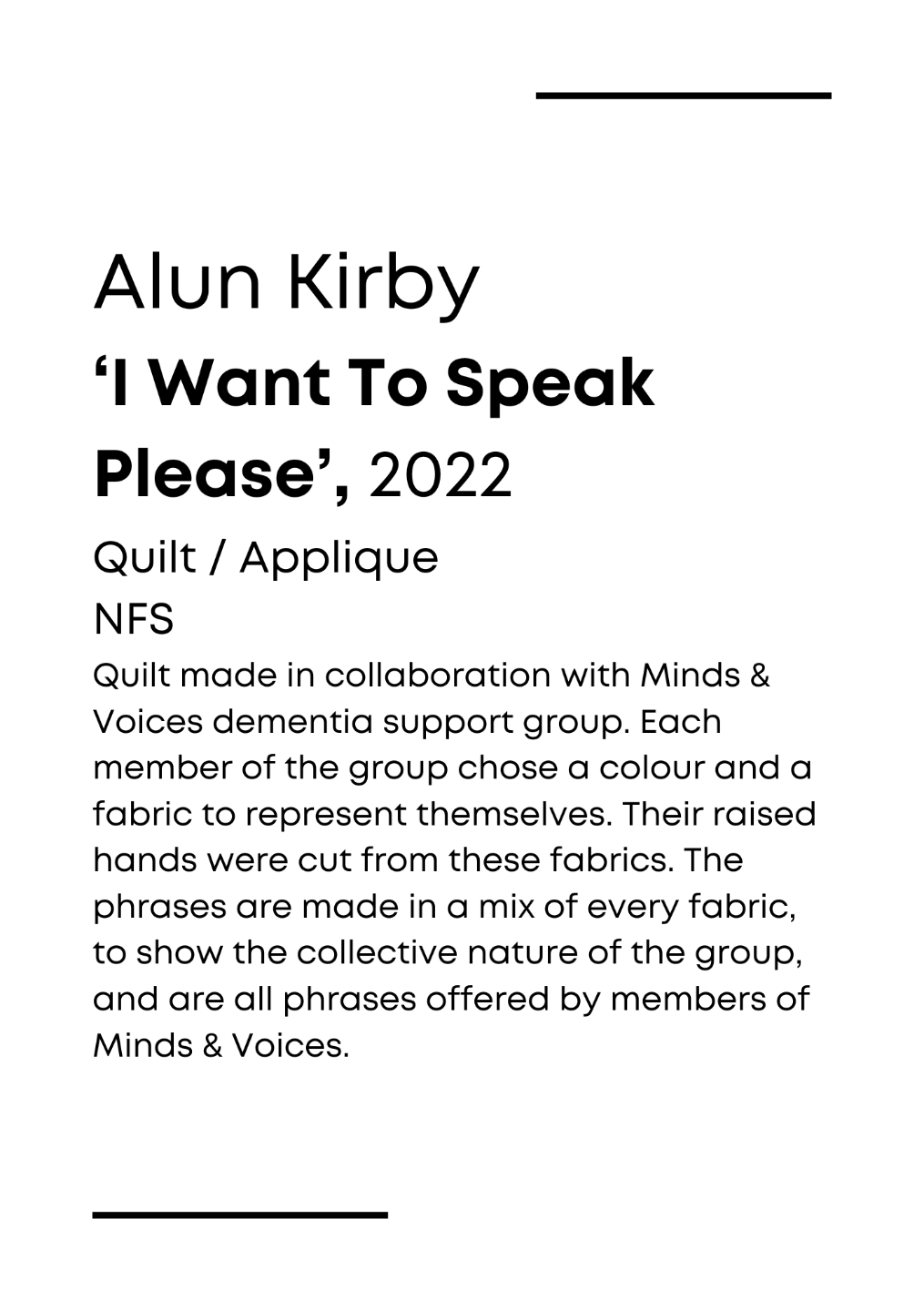
Alun Kirby
Artistic Approach and Process
Alun Kirby’s artistic practice is deeply rooted in themes of memory, often delving into philosophical and psychological theories of self and recollection. His background as a research scientist significantly influences his exploration of these themes. By collaborating with researchers and philosophers, he extends his artistic process into an interdisciplinary space. Alun frequently uses the cyanotype process, a photographic technique from the 1840s that creates one-of-a-kind prints, capturing the essence of experience rather than specific moments. He often incorporates other materials such as fabrics, origami, and sewing, and engages in socially participatory art, inviting audiences to be part of the creative journey.
Artistic Background
Alun’s path to becoming an artist was not a conventional one. For 20 years, he pursued a career as a research scientist, while nurturing photography as a serious hobby. His transition to art was gradual, taking 17 years and driven by a desire to balance his work with family life. Initially, he struggled with the confidence to call himself an artist due to a lack of formal training. “It took me a while to call myself an artist. I think a lot of it’s to do with lack of confidence and imposter syndrome,” he reflects. Over time, Alun began to focus on project-based art, particularly around the theme of memory, which he found recurring in his scientific work. Discovering cyanotype techniques after moving to London allowed him to continue creating without needing a darkroom, cementing this as his primary medium.
Inspirations and Themes
The notion of memory is at the core of Alun's work, a theme shaped by his scientific background and personal observations. His work seeks to understand how memory functions and evolves, often challenging the perception of it as a static or accurate record of events. His art is informed by his experiences in Yorkshire, where the landscape has been a significant source of inspiration. The expansive skies and tranquil spaces of York have influenced his projects, including those using local materials such as wool or natural objects collected during walks. Alun’s favourite pieces often embody this connection, such as a significant artwork housed in York Museum Library.


Emerging Artist Awards Experience and Working with SCAF
Alun participated in the first Emerging Artist Awards in 2019, a pivotal moment early in his art career. “SCAF was one of the first things that really excited me as feeling like I was able to call myself an artist,” he explains. The experience gave him a sense of validation and a platform to present work that was both personal and experimental. “It was the first time that I was able to make something for myself that I knew was going to be exhibited, and it was very personal.” Working with SCAF also helped Alun deepen his focus on memory, encouraging him to attend lectures and connect with academics and philosophers, further enriching his practice. He recalls, “I do see SCAF as a big first step of having the confidence to do things that I never would have thought of before.”
Post Emerging Artist Awards
Since his time with SCAF, Alun has continued to evolve as an artist. He relocated to Portugal, where he founded a Drawing Club in collaboration with local artists. His work remains engaged with the theme of memory, including efforts to reconstruct Porto’s hidden social history. Alun has exhibited worldwide, with solo and group shows in places such as Galeria AL859 in Porto and Open Eye Gallery in Liverpool. His artistic projects often involve community participation, as seen in collaborations with York Dementia Action Alliance and Minds & Voices, which included working with people living with dementia. He has also contributed to academic literature, with publications and plans for an upcoming conference on memory.
Future Aspirations and Emerging Ambitions
Looking ahead, Alun aims to extend his work on memory and dementia to his new home in Portugal, securing funding to build similar collaborative projects as he did in York. He is eager to further develop his interdisciplinary approach by continuing partnerships with philosophers and expanding his community-based initiatives. “Try to call yourself an artist from the beginning; there’s no shame in that,” he advises. His future ambitions remain firmly grounded in exploring memory’s complexities while pushing the boundaries of art and science.

